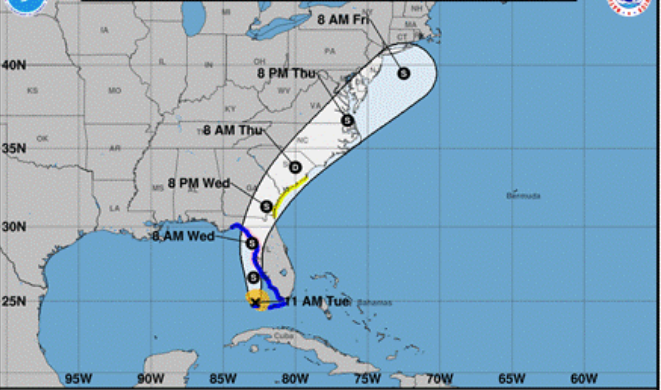County readies for Tropical Storm Elsa
Published 2:23 pm Tuesday, July 6, 2021

- This cone shows the probable path of Tropical Storm Elsa but does not show the size of the storm. Hazardous conditions can occur outside of the cone. (National Weather Service)
|
Getting your Trinity Audio player ready...
|
Beaufort County is bracing for potential impacts from Tropical Storm Elsa, which is expected to weaken into a tropical depression as it moves through eastern North Carolina on Thursday.
In an update published Tuesday afternoon, Deputy Emergency Services Director Chris Newkirk shared some details about what the region can expect.
- Beaufort County could see between 1-3 inches of rain. Chances of rain will increase after 2 a.m. Thursday morning and continue through midnight. The heaviest rains are expected to hit Beaufort County between 8 a.m. and 7 p.m. Thursday.
- South winds will begin to increase after sunrise Thursday, and transition to the southwest as Elsa moves across eastern N.C. Areas west of Blounts Creek and Bath are forecast to have sustained winds between 10-15 mph, with gusts of 20-25 mph possible between 10 a.m. and 10 p.m. Thursday. Areas east are forecasted to have sustained winds of 20-25 mph, with gusts of 30-35 mph possible during the same time period.
- Severe thunderstorms, isolated tornados and flash flooding are possible throughout the day on Thursday. However, the potential for these impacts appear to be highest between 2 p.m. and 7 p.m. Thursday.
Check thewashingtondailynews.com to see up-to-the-minute storm updates as they are made available by the National Weather Service and county officials.
“The State Emergency Operations Center in Raleigh activated (Tuesday) to monitor the storm,” a press release from Gov. Roy Cooper’s office reads. “The State Emergency Response Team is preparing to support local governments with any storm-related needs.”
“Small changes in the forecast track of a tropical system can mean big changes in storm impacts and rainfall amounts,” said state Emergency Management Director Mike Sprayberry. “That’s why close attention to the forecast for your area is important.”
State officials are advising North Carolina residents to make sure they have multiple ways to receive weather information from reliable sources, review their personal emergency plan and evacuation routes, check their emergency supply kit, plan for elderly relatives and pets, and make sure their insurance information is up-to-date.





